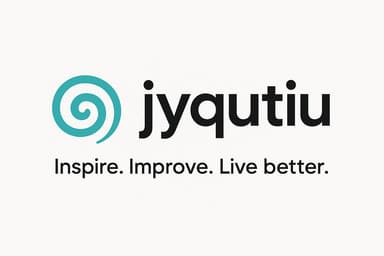Introduction
Time management is the single most powerful skill a busy professional can sharpen. With competing meetings, overflowing inboxes, and a long to-do list, the difference between feeling overwhelmed and producing high-value work often comes down to systems rather than sheer willpower. This article breaks down practical techniques you can adopt immediately: how to prioritize work, structure your calendar, execute with fewer interruptions, and build habits that sustain high performance. Each section connects to the next so you move from deciding what matters to protecting the time you set aside and improving continuously. Read on for concrete tools, workflows, and a comparative table to help choose the best methods for your role.
Prioritize and plan effectively
Effective time management begins with clarity about outcomes. Without clear priorities, every task feels urgent. Start by defining your weekly outcomes and aligning daily tasks to those outcomes.
- Eisenhower matrix: Sort tasks into urgent/important quadrants. Focus first on important but not urgent items to prevent crises later.
- Most important tasks (MITs): Choose 1–3 MITs each day. Treat completing MITs as your success metric.
- Weekly planning session: Spend 30–60 minutes at the start or end of the week to schedule your MITs, meetings, and deep-work blocks. This reduces reactive firefighting.
- Goal alignment: Link daily work to quarterly goals. If a task does not move a key result forward, question its priority.
Prioritization feeds the next step: once you know what matters, you can structure your time to deliver on it.
Structure your day with time blocks and batching
With priorities set, convert them into a calendar that protects focused execution. Blocking time and batching similar work reduce context switching and increase throughput.
- Time blocking: Reserve dedicated chunks on your calendar for deep work, email, meetings, and administrative tasks. Treat these blocks as nonnegotiable appointments.
- batching: Group similar tasks such as emails, calls, or reports into one session to avoid constant switching.
- Pomodoro and rhythm planning: Use focused intervals (for example 25 minutes work, 5 minutes break) for tasks requiring high concentration. Pair Pomodoro with longer deep-work blocks for complex items.
- Theme days: Where possible, assign themes to days (e.g., strategy on Mondays, team on Wednesdays) to create mental continuity and reduce setup overhead.
Time blocks must be realistic and aligned with your energy cycles. That leads to the next priority: reducing interruptions so those blocks are productive.
Minimize distractions and automate where possible
Protected calendar time is wasted if interruptions are constant. Use rules, tools, and team norms to reduce noise and reclaim focus.
- Email and messaging rules: Set expectations for response times, turn off nonessential notifications, and check email in scheduled batches.
- Meeting discipline: Require agendas, time limits, and only invite essential participants. Consider short standing updates instead of long meetings.
- Automation and templates: Use canned responses, workflow automation, and project templates to eliminate repetitive work.
- Delegation: Delegate tasks that others can do 80 percent as well. Use clear briefs and acceptance criteria to reduce rework.
- Environment: Use app blockers, a dedicated workspace, and visual signals like a busy indicator to communicate focus time to colleagues.
Reducing distractions amplifies the effectiveness of your blocks and batching. To maintain gains, it’s essential to build reinforcing habits and measure results over time.
Build long-term habits and measure results
Short-term tactics only last if supported by routines and feedback. Create simple metrics and habit anchors to institutionalize better time management.
- Daily and weekly reviews: Spend 10 minutes daily and 30–60 minutes weekly to review completed work, adjust priorities, and plan blocks for the next period.
- Habit stacking: Attach new behaviors to existing routines, for example reviewing your MITs after your morning coffee.
- Track outcomes, not hours: Measure progress on goals and key results. Count completed MITs, decision lead times, or project milestones rather than time spent alone.
- Energy management: Schedule your hardest work during peak energy windows and lower-energy tasks elsewhere.
- Continuous improvement: Test one new technique for two weeks, measure its effect, and iterate. Small adjustments compound into large gains.
When you combine clear priorities, disciplined scheduling, interruption control, and continuous measurement, your time management system becomes self-reinforcing.
Comparing common techniques
| Technique | Best for | Typical session length | Common tools |
|---|---|---|---|
| Time blocking | Planning and protecting focus | 30–120 minutes | Calendar app, calendar color codes |
| Pomodoro | Short, intense focus bursts | 25 minutes work / 5 minutes break | Timer apps, browser extensions |
| Batching | Reducing context switching | 30–90 minutes | Task lists, calendar blocks |
| Eisenhower matrix | Prioritization and triage | 10–30 minutes per planning session | Notes app, paper planner |
| Weekly review | Course correction and planning | 30–60 minutes | Notebook, project management tool |
Conclusion
Time management for busy professionals is a layered practice: start by deciding what matters, then translate those priorities into guarded calendar blocks, reduce interruptions and automate repetitive work, and finally build habits that sustain progress. The techniques above work best when used together rather than in isolation. Prioritization informs your blocks; blocks are only effective when distractions are minimized; and sustained improvement comes from regular review and measurement. Pick one priority-setting method and one execution technique to trial for two weeks, measure impact, and adjust. Over time, disciplined habits will convert scarce time into meaningful results and less stress.
Image by: Photo By: Kaboompics.com
https://www.pexels.com/@karolina-grabowska




